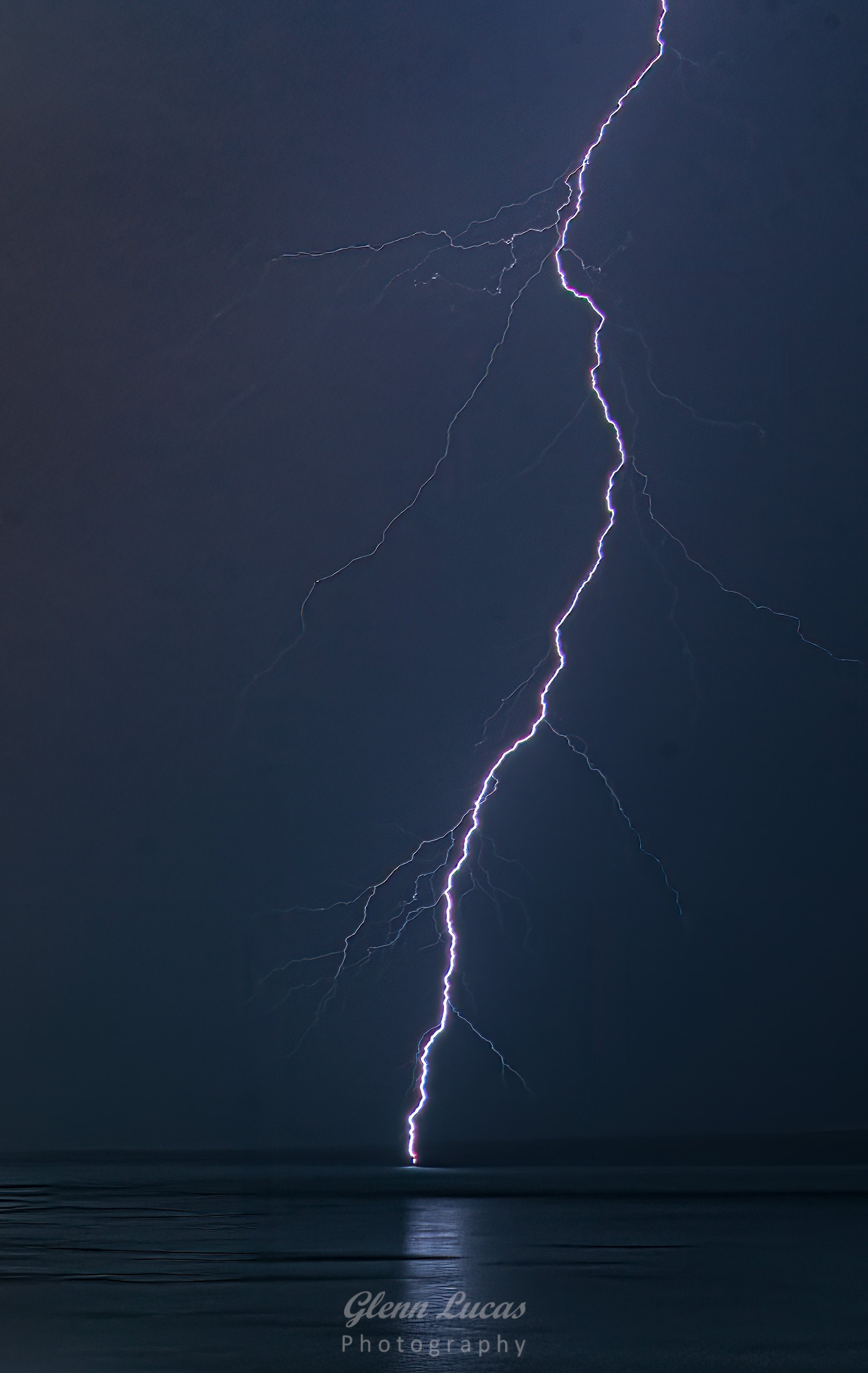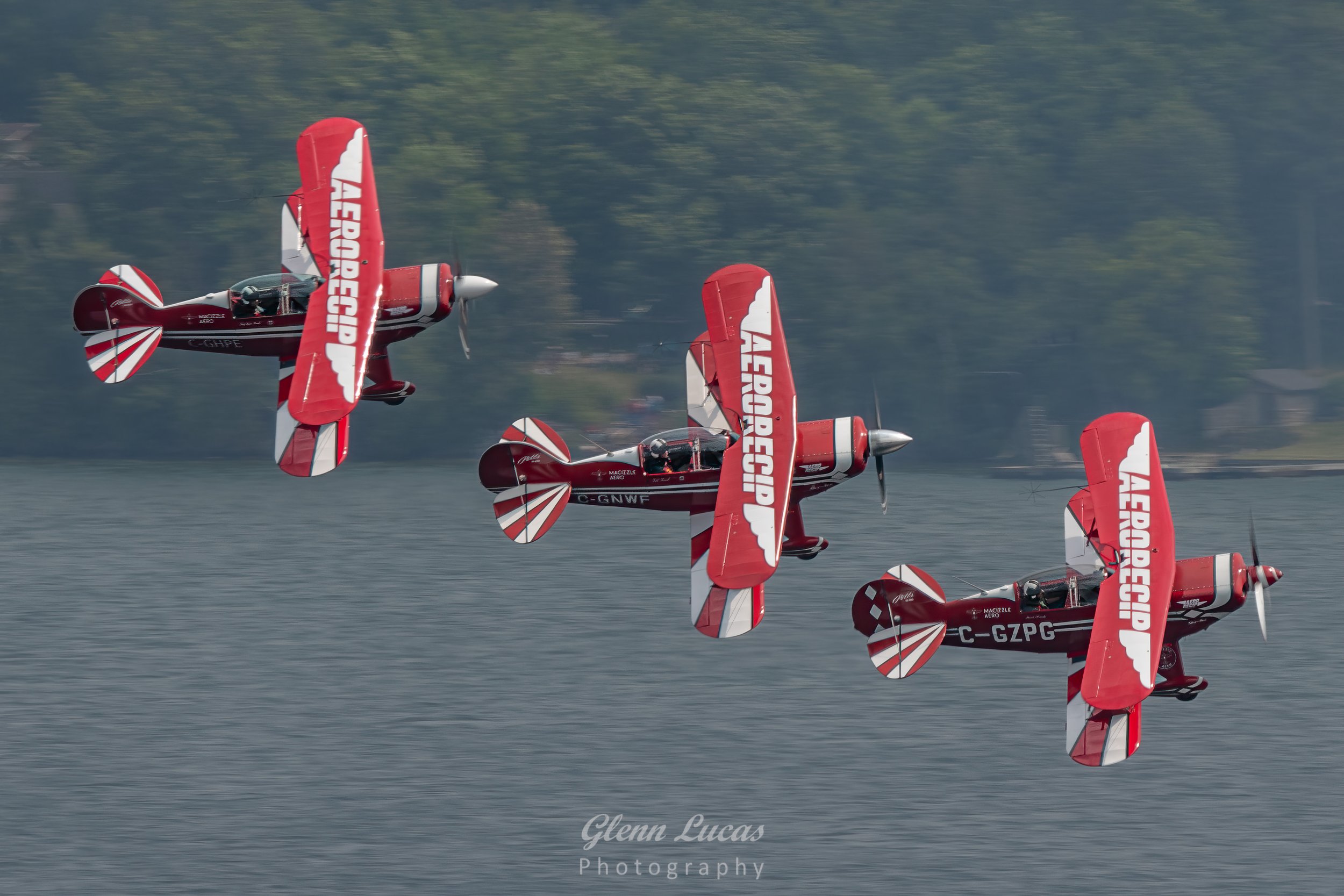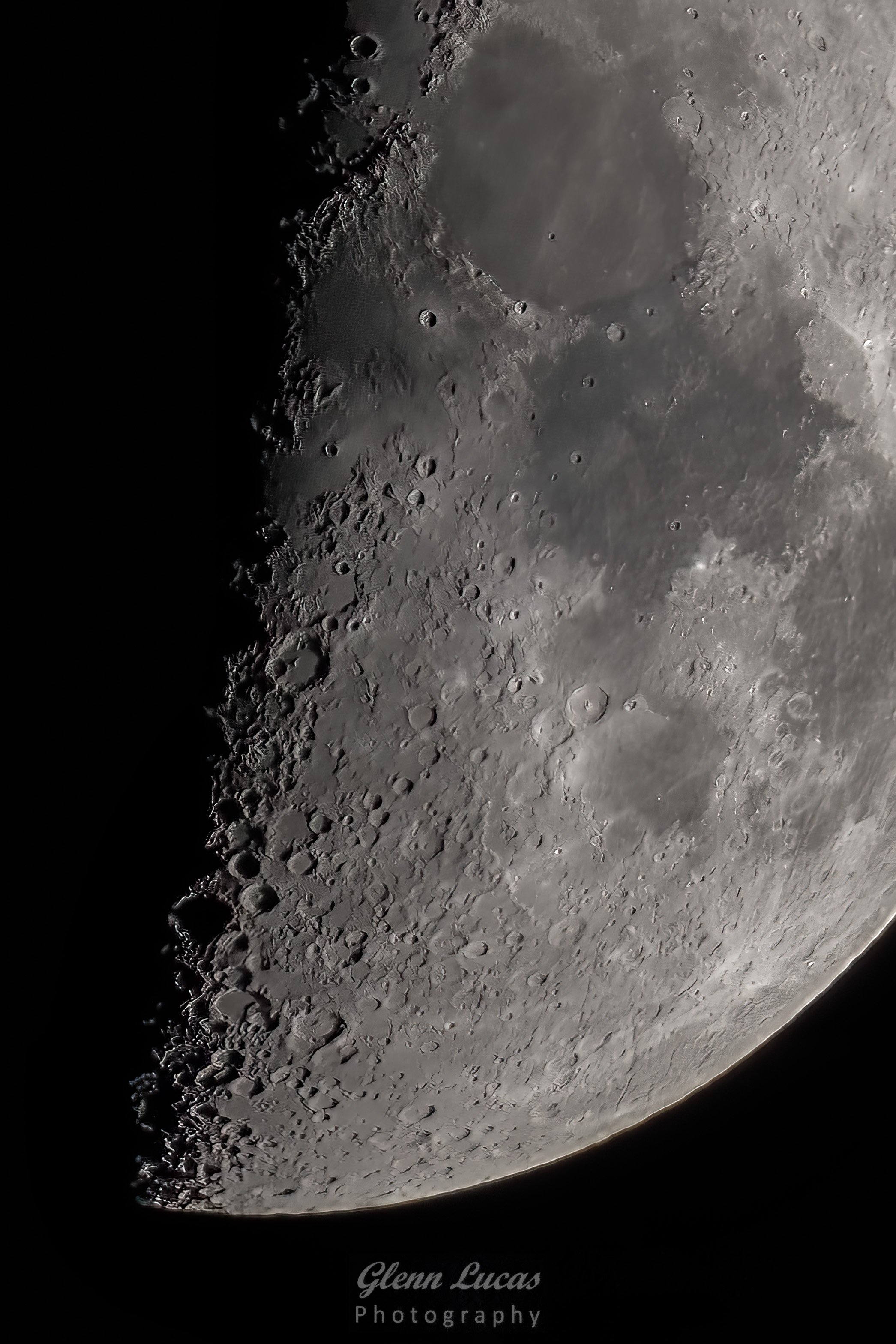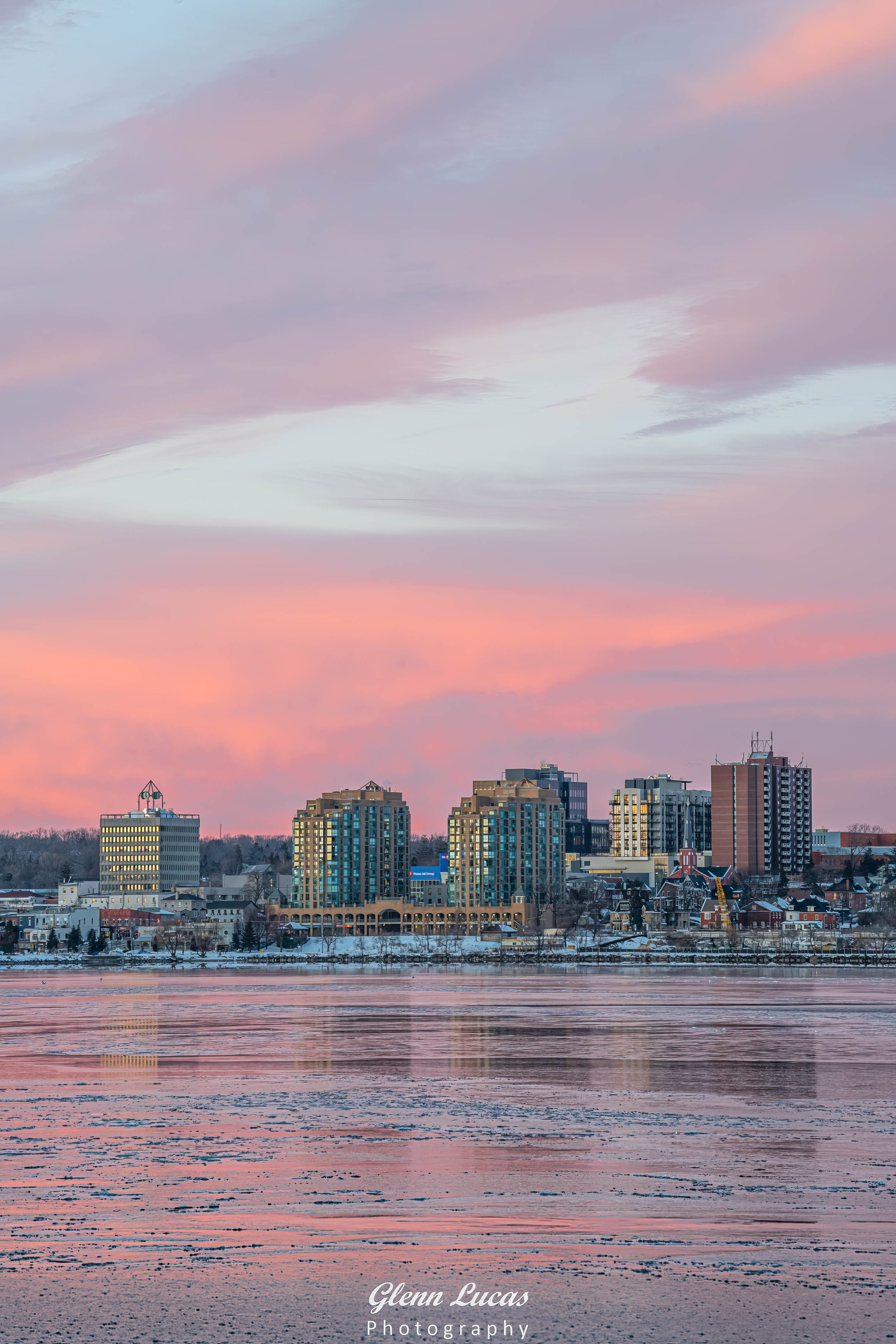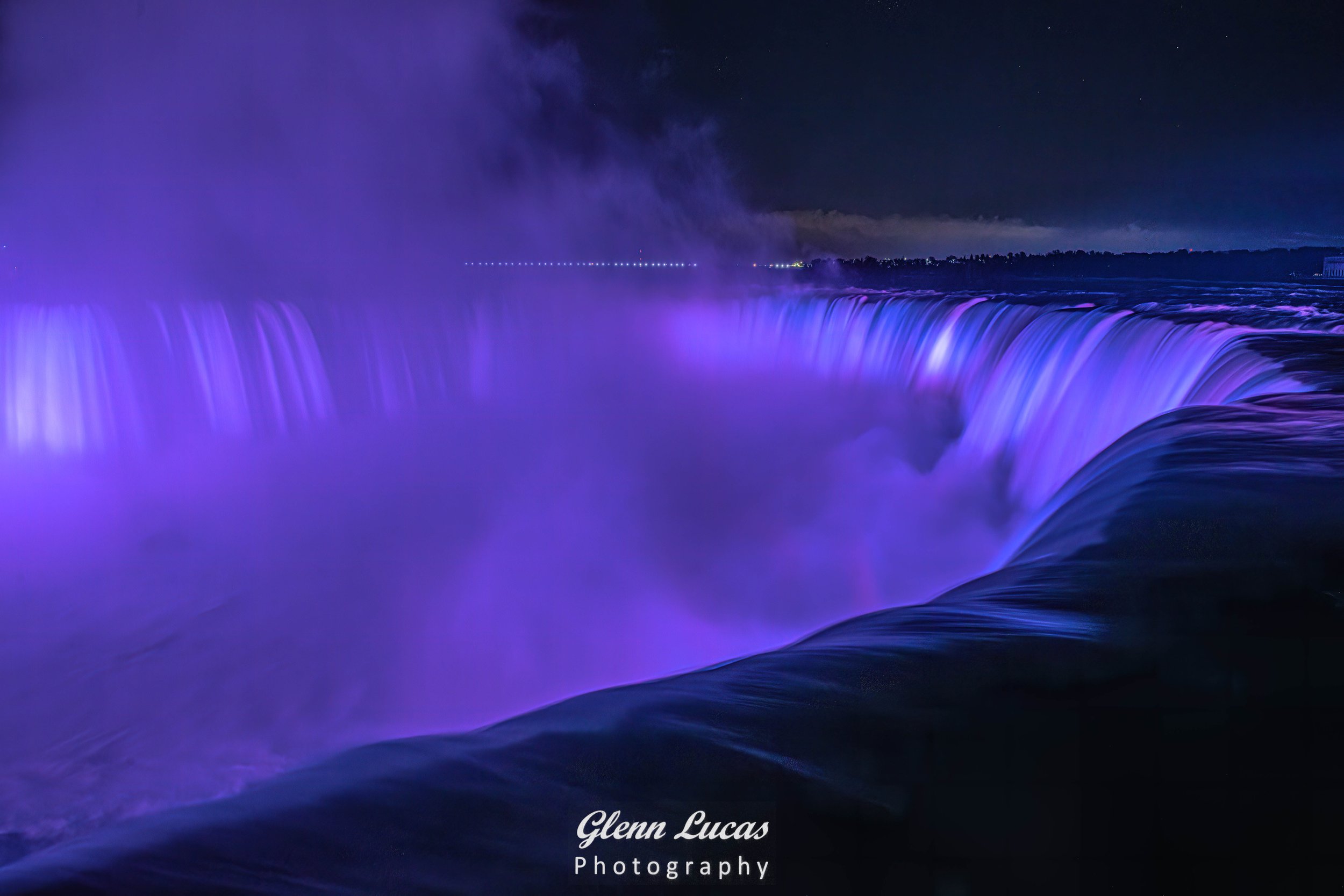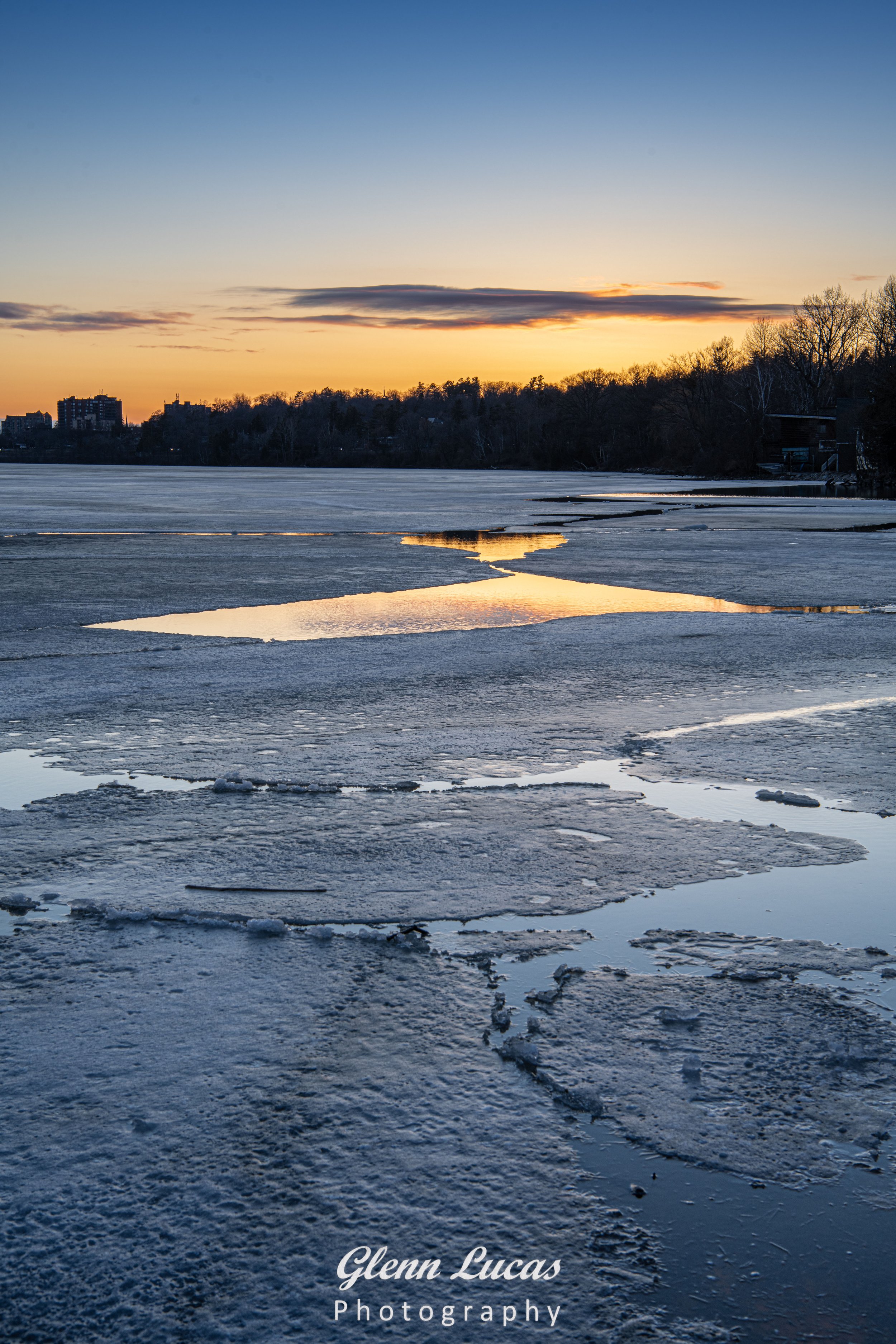What makes Niagara Falls so impressive is the amount of water flowing over the falls (about a million bathtubs full of water a minute). Most of the tallest falls in the world have very little water flowing over them. It's the combination of height and volume that makes Niagara Falls so breathtaking.
The rapids above the falls reach a maximum speed of 40 kph or 25 mph, with the fastest speeds occurring at the falls themselves at 68 mph. I wanted to capture an interesting image of the Horseshoe Falls that gives a sense of the speed and volume of water.
Firstly, I needed to stand as close as possible to the edge of the falls. For those of you have visited the Falls, you probably know where that is.
Next, I needed to determine the right shutter speed. A very fast shutter speed would simply “freeze” the motion of the water, while a very slow shutter speed would cause the water to appear too blurred, completely dulling the movement of the water. After taking a few test shots, I settled on a shutter speed of 1.5 seconds.
Lastly, I needed to get the right exposure using a shutter speed of 1.5 seconds. A dark exposure would hide many of the features while a bright exposure would make the image appear unrealistic and take from that sense of mystery and danger.
If I used too large an aperture, objects in the far distance would appear out of focus and a very small aperture would significantly reduce the mount of light captured by the camera. I used a mid aperture setting of f/8 at ISO 400.
The result of the effort is this image, taken at 11:00 at night.







